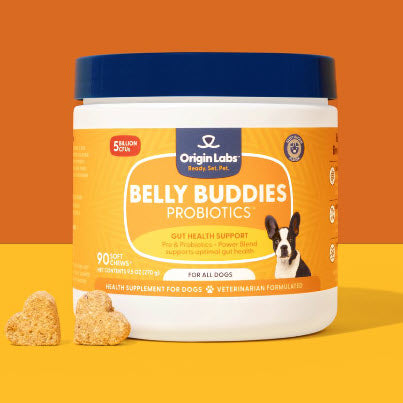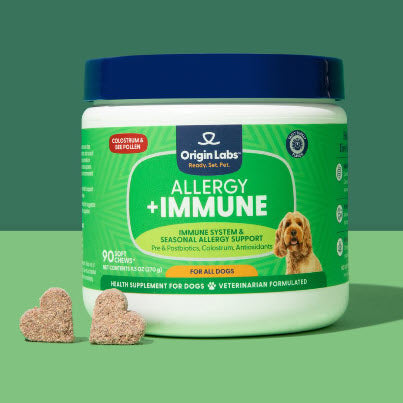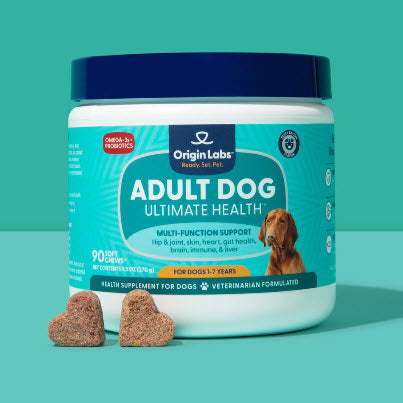Introduction
Many dog owners have wondered at some point, "Can dogs eat steak?" It's natural to be curious about sharing a delicious piece of meat with your furry friend. However, before introducing any new food into your dog's diet, it's important to understand what they need nutritionally.
Dogs need a well-balanced diet that provides them with all the essential nutrients they require to stay healthy. While steak may appear to be a protein-packed delight, it's crucial to weigh both its advantages and potential hazards when deciding whether or not to feed it to your pet.
In this article, we will discuss:
- The nutritional benefits of steak for dogs.
- The possible dangers associated with feeding steak, whether cooked or raw.
- Expert advice on how to safely include steak in your dog's meals.
By understanding these factors, you'll be able to make better choices about what you feed your furry companion. If you're interested in finding specially designed products for specific life stages, such as Ultimate Health chews for senior dogs or puppies, which are tailored to provide the health support they need as they grow, they are available as well.
Now, let's explore whether steak can indeed be a safe and beneficial addition to your dog's diet.
The Nutritional Value of Steak for Dogs
The Power of Protein
Steak is often celebrated as a high-quality protein source, not just for humans but also for our canine companions. Protein plays a crucial role in a dog’s diet, contributing to muscle development, tissue repair, and overall health. When considering steak for dogs, it's important to recognize the ways it can benefit them:
- Supporting Muscle Development: High-quality protein from steak helps maintain and build muscle mass, which is especially important for active breeds or working dogs.
- Tissue Repair: Protein aids in the repair of tissues and cells, ensuring your dog remains healthy and resilient.
Essential Nutrients in Steak
Beyond protein, steak offers several essential nutrients that can bolster your dog's nutrition:
- Iron: Vital for producing hemoglobin, iron ensures that oxygen is efficiently transported throughout the body. Iron deficiency can lead to anemia, which manifests as fatigue and weakness.
- Zinc: This mineral supports immune function, skin health, and wound healing. Adequate zinc intake can help your dog maintain a shiny coat and robust immune system.
Benefits of High-Quality Protein
Understanding the importance of high-quality protein is key when integrating steak into your dog's diet:
- Enhanced Energy Levels: Protein provides energy that fuels daily activities and supports metabolic processes.
- Improved Coat Health: A diet rich in protein contributes to a healthy, shiny coat by supporting the production of necessary oils and keratins.
- Better Digestion: Quality protein sources are easier for dogs to digest compared to lower-grade proteins. This means fewer gastrointestinal issues and better nutrient absorption.
Specific Nutrients Found in Steak
Highlighting some specific nutrients found in steak can give you insights into how it enriches your dog's diet:
- B Vitamins (B6 and B12): These vitamins are crucial for energy production, brain function, and maintaining a healthy nervous system.
- Omega Fatty Acids: While not as abundant as in fish, steak still contains omega fatty acids that support heart health and reduce inflammation.
- Phosphorus: Essential for bone health, phosphorus works alongside calcium to maintain strong bones and teeth.
Integrating steak into your dog's diet can be beneficial when done correctly. The key lies in recognizing its nutritional value while ensuring it complements a balanced diet tailored to your pet's unique needs.
Is Steak Safe for Dogs?
Cooked Steak: Potential Hazards
The safety of feeding steak to dogs often starts with the question: Is cooked steak safe for dogs? Cooked steak can be a nutritious addition to your dog's diet, but it comes with certain caveats. One significant concern is the seasoning. Many seasonings, such as garlic, onion powder, and excessive salt, are harmful to dogs. These ingredients can lead to gastrointestinal issues or even more severe health problems.
Excessive fat is another hazard when it comes to cooked steak. While some fat is beneficial for energy, too much can contribute to obesity and pancreatitis—a severe inflammation of the pancreas.
When preparing steak for dogs:
- Remove any visible fat to reduce the risk of obesity and pancreatitis.
- Avoid using seasonings that might be harmful. Stick to plain, unseasoned meat.
- Cook the steak thoroughly but avoid charring, which can create harmful compounds.
Raw Steak: The Controversy
The debate around feeding raw steak to dogs is a heated one. Proponents argue that raw meat diets are closer to what ancestral dogs would have eaten and claim benefits like improved coat condition and dental health. However, these claims are largely anecdotal and lack substantial scientific backing.
On the flip side, raw meat poses significant risks:
- Bacterial Contamination: Raw meats can harbor harmful bacteria such as Salmonella and E. coli, which can cause severe illness in both dogs and humans.
- Parasites: Raw meat may contain parasites like tapeworms or roundworms that can infect your dog.
- Nutritional Imbalance: A diet heavily reliant on raw meat may lack essential nutrients unless carefully balanced.
Experts generally advise against feeding raw steak due to these risks.
Expert Recommendation
Given these concerns, experts usually recommend avoiding raw steak for dogs due to the risk of foodborne illnesses. If you still opt to include raw steak in your dog's diet, follow these guidelines:
- Source Quality Meat: Purchase meat from reputable suppliers who follow strict hygiene standards.
- Freeze Before Feeding: Freezing meat at temperatures below -4°F (-20°C) for several weeks can help kill parasites.
- Minimize Bacterial Exposure: Always wash your hands and any surfaces that come into contact with raw meat thoroughly.
Safe Cooking Methods
For those who prefer cooking steak for their dogs, consider these best practices:
- Grill or Bake Without Seasoning: Simple cooking methods without added spices or oils keep the meat safe and digestible.
- Cut into Small Pieces: Smaller pieces are easier for your dog to chew and digest.
- Store Properly: Leftover cooked steak should be stored in an airtight container in the refrigerator.
These steps ensure that your dog's occasional treat doesn't become a health hazard.
Understanding both the benefits and risks allows you to make informed decisions about incorporating steak into your dog's diet safely.
Serving Steak to Your Dog: Best Practices
When it comes to feeding steak to your furry friend, it's important to follow safe cooking methods and handle the food properly. This will help ensure that your dog can enjoy their treat without any health risks. Here are some best practices to keep in mind:
Safe Cooking Methods
Choosing the right cooking method makes a significant difference in making steak safe for canine consumption. Here are a few recommended techniques:
- Grilling: Grill the steak without any seasoning, oils, or marinades which can be harmful to dogs. Ensure the meat is cooked through to eliminate any potential bacteria.
- Baking: Bake the steak at a moderate temperature until fully cooked. Avoid using any spices or ingredients like garlic and onions that are toxic to dogs.
- Boiling: Boil the steak in plain water until it’s thoroughly cooked. This method ensures that no harmful seasonings or fats are introduced.
Proper Food Handling and Storage
Maintaining proper food handling and storage practices is essential for keeping the steak fresh and safe for your dog:
- Storage: Store raw steak in a refrigerator at temperatures below 40°F (4°C) to prevent bacterial growth. Use airtight containers or plastic wrap to avoid cross-contamination with other foods.
- Thawing: Thaw frozen steak in the refrigerator rather than on the countertop. This reduces the risk of bacterial contamination.
- Hygiene: Always wash your hands, utensils, and surfaces before and after handling raw meat. This prevents the spread of harmful bacteria such as Salmonella or E. coli.
Serving Tips
When serving steak to your dog, keep these tips in mind:
- Portion Size: Serve small portions of lean cuts without bones. Too much fat can cause digestive issues like pancreatitis in dogs.
- Temperature: Ensure the steak is cooled down before offering it to your dog. Hot meat can burn their mouth and throat.
- Frequency: Treat steak as an occasional indulgence rather than a regular part of their diet.
Applying these practices helps guarantee that the steak you serve is both delicious and safe for your beloved pet. Proper preparation not only enhances the flavor but also ensures their health is never compromised.
Alternatives to Steak for a Balanced Dog Diet
Protein Sources for Dogs
While steak can be a delicious treat, there are other viable protein sources that ensure a balanced diet for dogs:
- Chicken: An easily digestible source of protein, chicken is often included in many dog foods. It's rich in essential amino acids and provides a good amount of energy.
- Fish: Fish like salmon and sardines are excellent sources of omega-3 fatty acids, which support skin health and coat quality. Fish also aids in reducing inflammation and supports joint health.
- Turkey: Another lean meat option, turkey is packed with protein and provides essential nutrients without excessive fat content.
Commercially Available Dog Food
Many commercially available dog foods are expertly formulated to meet your dog's dietary needs:
- Dry Kibble: Often chosen for its convenience, dry kibble offers balanced nutrition with added benefits like dental care.
- Wet Food: Provides hydration along with high-quality ingredients, making it an excellent choice for picky eaters or those needing extra moisture in their diet.
- Specialized Diets: For dogs with specific needs, such as grain-free options or formulas for sensitive stomachs, specialized diets can cater to unique health requirements.
Homemade Meals
For those who prefer preparing meals at home:
- Lean Meats: Incorporate various lean meats like chicken breast or turkey without skin.
- Vegetables: Add vegetables such as carrots, peas, and sweet potatoes to provide fiber and vitamins.
- Grains: Include grains like brown rice or quinoa for additional energy.
Consulting with a veterinarian before making significant changes ensures the homemade meals meet all nutritional requirements. This approach helps maintain a balanced diet tailored to your dog's specific needs.
Consulting Your Vet: Advice on Feeding Steak to Dogs
Importance of Veterinary Consultation
Before giving your dog steak, it's crucial to consult a vet. This is especially true if your dog has any health problems. Getting advice from a vet before feeding steak to dogs ensures that you're making the right choices for your pet based on professional guidance.
Personalized Guidance from Veterinarians
Vets can provide you with tailored advice about what to feed your dog, taking into account different factors such as:
- Age: Puppies, adult dogs, and senior dogs have different nutritional needs. For example, puppies need more protein for growth, while senior dogs may need food that's easier to digest.
- Breed: Some breeds are more likely to have certain health issues or be sensitive to certain foods. For instance, large breeds like Great Danes may have different dietary requirements compared to smaller breeds like Chihuahuas.
- Overall Health: Dogs with conditions like kidney disease, pancreatitis, or obesity may need special diets. A vet can tell you if it's safe to give steak based on these health factors.
Benefits of Professional Advice
Seeking guidance from a vet has several advantages:
- Balanced Nutrition: Vets can ensure that adding steak won't disrupt your dog's overall nutrition.
- Controlling Portions: Experts can provide recommendations on how much steak is appropriate for your dog so they don't overeat and gain weight.
- Keeping Them Safe: Vets can give you tips on preparing and serving steak safely to reduce the risk of bacteria or choking.
Expert Recommendations
Veterinarians know the best ways to introduce new foods into your dog's diet. Their recommendations can help keep your dog healthy and prevent problems with their food.
By talking to a vet, you can safely give your dog steak or other new foods knowing that you're doing what's best for them. However, it's essential to be aware of potential risks associated with certain foods. For instance, while steak can be suitable for dogs in moderation, it's important to note that other meats like turkey may have different nutritional benefits and risks, as discussed in this article.
Conclusion
Feeding steak to your dog can offer some nutritional benefits, but it's important to do so in moderation. Cooking the steak thoroughly ensures safety by getting rid of harmful bacteria. Raw steak should generally be avoided because it can cause bacterial infection.
It's crucial to prioritize a balanced commercial diet or homemade meals specifically made for dogs. However, occasionally giving small portions of cooked lean steak as a special treat can be enjoyable for your furry friend.
Key Points:
- Moderation and Safety: Cook steak thoroughly and feed in moderation.
- Balanced Diet: Prioritize commercial or homemade meals designed for dogs.
- Vet Consultation: Always consult with your veterinarian before making any changes to your dog's diet, including the addition of steak.
For any dietary changes, especially those involving new foods like steak, professional advice is invaluable. This ensures that your dog's nutritional needs are met without compromising their health.
FAQs (Frequently Asked Questions)
Can dogs eat steak?
While steak may have some nutritional benefits for dogs, it should be fed in moderation and cooked thoroughly to ensure safety. Raw steak should generally be avoided due to the risk of bacterial infection.
What are the potential nutritional benefits of steak for dogs?
Steak is a rich source of protein and essential nutrients, which play a role in supporting muscle development and overall health in dogs. Specific nutrients found in steak, like iron and zinc, can also be beneficial for dogs.
Is cooked steak safe for dogs to consume?
Cooked steak can be safe for dogs to consume as long as it is prepared without any seasoning and excessive fat. It's important to ensure thorough cooking to eliminate any potential hazards.
Should I feed raw steak to my dog?
Based on expert advice, it is generally not recommended to feed dogs raw steak due to the risk of foodborne illnesses. However, if you choose to do so, provide guidelines on sourcing quality meat and minimizing bacterial exposure.
What are the best practices for serving steak to dogs?
Safe cooking methods for preparing steak for dogs include grilling or baking without any seasoning. Proper food handling and storage are also crucial to maintain its integrity for canine consumption.
What are some alternatives to steak for a balanced dog diet?
Other protein sources that can be included in a balanced dog's diet include chicken or fish. Additionally, commercially available dog food formulated to provide necessary nutrients can be considered.
Why is it important to consult a veterinarian before feeding steak to dogs?
It's important to consult a veterinarian before incorporating steak into your dog's diet, especially if they have any underlying health conditions. Vets can provide personalized guidance based on factors like the dog's age, breed, and overall health status.








